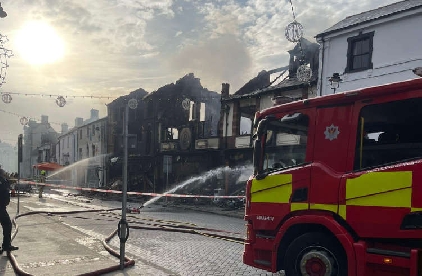
Police in West Mercia were called out to 50 reports of attacks by XL bully dogs in the first half of the year.
In 22 of those attacks, either a person or an assistance dog was injured.
A further 12 incidents related to breeds covered by the Dangerous Dogs Act 1991 being out of control in a public place, but where no-one was injured.
There were also 15 other incidents in which dogs were “dangerously out of control” but there were no injuries.
There was one report of “allowing a fighting dog to be in a public place without a muzzle or a lead”.
West Mercia Police published the information on its website in response to a Freedom of Information request for incidents attended between January 1 and June 30, 2024.
The force pointed out that the dogs identified were all believed to be the XL bully breed by the person reporting the incident.
Chief Inspector Andy Wortley said: “Any incident where a person is injured by a dangerous dog is one too many.
“Protecting the public and safeguarding communities is a key responsibility for us, and reducing the fear and harm caused by dangerous dogs is very much part of that commitment.
“We’ve been working hard to meet the increased demands of the Dangerous Dogs Act, particularly in relation to the new legislation around XL Bully breeds.”
He said this includes training for specialist officers who identify and deal with banned breeds.
“As well as ensuring we have the ability to seize dogs where necessary, with the right equipment and vehicles, and the right kennelling provision,” added chief inspector Wortley.
“Every report of a dangerous dog is reviewed by a dog legislation officer, and since the start of this year we have seized 45 dangerous dogs, 24 of which are believed to be or identified as XL Bullies. Criminal proceedings are pursued where appropriate.
“We continue to work closely with various partners on educating people on the risks posed by some dogs. There is a responsibility on all of us to ensure that we do all we can to keep people safe through responsible dog ownership, to ultimately reduce the risk posed to the public.”


 Herefordshire Lotto winners appear in iconic image
Herefordshire Lotto winners appear in iconic image
 School contracts worth over £1 million announced
School contracts worth over £1 million announced
 Emergency response exercise held just days before fire ripped through town centre
Emergency response exercise held just days before fire ripped through town centre
 Appeal following Leominster car theft
Appeal following Leominster car theft
 Abergavenny Fire: MP visits "devestating scene"
Abergavenny Fire: MP visits "devestating scene"
 Fire crews tackle huge blaze in Abergavenny
Fire crews tackle huge blaze in Abergavenny
 Panel criticises West Mercia Police and Crime Commissioner
Panel criticises West Mercia Police and Crime Commissioner
 Man charged with attempted murder due in court
Man charged with attempted murder due in court

